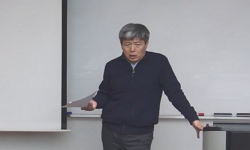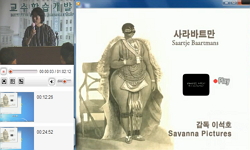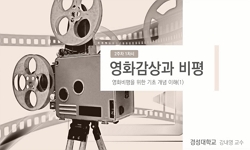「바바 이야기: 코끼리 왕 바바」 이야기는 소위 아동용 그림책의 고전으로 알려진 작품으로 1933년 이래로 수많은 언어로 번역되어 세계 여러 나라 어린이들에게 읽혀져 왔다. 그림책의 고...
http://chineseinput.net/에서 pinyin(병음)방식으로 중국어를 변환할 수 있습니다.
변환된 중국어를 복사하여 사용하시면 됩니다.
- 中文 을 입력하시려면 zhongwen을 입력하시고 space를누르시면됩니다.
- 北京 을 입력하시려면 beijing을 입력하시고 space를 누르시면 됩니다.
https://www.riss.kr/link?id=A103062304
- 저자
- 발행기관
- 학술지명
- 권호사항
-
발행연도
2011
-
작성언어
English
- 주제어
-
등재정보
KCI등재
-
자료형태
학술저널
-
수록면
105-126(22쪽)
-
KCI 피인용횟수
1
- 제공처
-
0
상세조회 -
0
다운로드
부가정보
국문 초록 (Abstract)
「바바 이야기: 코끼리 왕 바바」 이야기는 소위 아동용 그림책의 고전으로 알려진 작품으로 1933년 이래로 수많은 언어로 번역되어 세계 여러 나라 어린이들에게 읽혀져 왔다. 그림책의 고전에 대한 사람들의 믿음에 대해 Dorfman(1983)과 Kohl(1995)는 「바바 이야기: 코끼리 왕 바바」가 순진해 보이는 이야기속에 제국주의와 식민주의, 자본주의의 메시지를 교묘히 숨기고 있기 때문에 어린이들에게 부적절한 영향을 미친다고 비판한다. 하지만, 그들의 비판은 그 이야기를 읽는 주체인 어린이들의 사고능력에 대한 고려나, 실제 어린이들의 목소리/의견의 포함 없이, 단지 텍스트 분석에 의한 비판이라 할 수 있다. 따라서 이 연구는 Dorfman과 Kohl이 비판해 온 「바바 이야기: 코끼리 왕 바바」를 한국의 사회 문화적 맥락에서 한국 어린이들이 실제로 어떻게 읽어내고 있는 지를 살펴 본 연구로서, 어린이들의 대화를 분석한 연구이다. 서울에 위치한 어느 초등학교 1학년 한 학급의 어린이들이 연구에 참여하였고, 포커스 그룹 인터뷰 방법을 사용하여 어린이들의 자유로운 의견과 생각을 담고자 하였다. 어린이들 생활과 삶에 영향을 미치는 큰 흐름으로서 한국의 사회․문화적 맥락을 파악하는데 탈식민주의와 Bakhtin의 관점을 사용하여 분석하고, 어린이들의 사소한 표현과 반응을 이해하기 위해 문학비평(literary studies)과, 비판이론, 정신분석이론으로부터 빌려온 관점을 이용하여 데이터를 분석하였다. 참여 어린이들은 「바바 이야기: 코끼리 왕 바바」에 대해 모순된 태도와 관점을 드러내면서, 그들이 속해 있는 한국 사회가 서구 문화에 대해 가지고 있는 양가적인 모습을 반영하고 있었다. 그런 한국 사회의 모습을 비추면서, 어린이들은 때때로 서구의 관점을 드러내기도 하고, 또 때론 이야기 내용에 대한 맹목적인 수용을 거부하면서, 저항과 수용, 굴복을 넘나드는 반응을 보였다. 따라서 다른 문화에서 형성된 이야기가 전혀 다른 사회․문화적 배경과 역사를 가진 한국 어린이들에게 읽혀질 때, 단순히 “그리고 그들은 그 후로 오랫동안 행복하게 잘 살았단다”와 같이 끝날 수만은 없음을 보여 주었다.
다국어 초록 (Multilingual Abstract)
The story of Babar has had a broad appeal around the world as one of classic children’s books. Against many adults’ expectation on the story of Babar as a famous classic story, Dorfman(1983) and Kohl(1995) expose hidden messages representing imper...
The story of Babar has had a broad appeal around the world as one of classic children’s books. Against many adults’ expectation on the story of Babar as a famous classic story, Dorfman(1983) and Kohl(1995) expose hidden messages representing imperialism, colonialism, capitalism and so on under an innocent mask. Their criticism was however based on analyzing the text itself rather than young readers. Sticking to the texts only, they did not consider any curiosity about young children’s intellects, voices, or different possibilities of children’s interaction with the story of Babar. This study endeavored to listen to children’s voices about the story of Babar in order to learn how Korean children really respond to the story in their social and cultural contexts. Children in a first-grade class of an elementary school located in Seoul participated in this study. Focus group interview was employed as a method. Data were analyzed through postcolonial and Bakhtinian theories to understand social and cultural contexts. Various theoretical perspectives borrowed from literary theory, critical theory, and psychoanalytic approaches were used as well to make sense of details of children’s utterances and responses. The children revealed the state of their society in the process of interpreting the story of Babar in their contexts. They exposed Western perspectives sometimes, but they also exhibited resistances to the blind acceptance of the text. They would swing back and forth somewhere between resistance and submission, reflecting their society.
참고문헌 (Reference)
1 De Brunhoff, J., "바바 이야기1: 코끼리 왕 바바" 시공사 1993
2 Dorfman, A., "The empire’s old clothes: What the Lone Ranger, Babar, and other innocent heroes do to our minds" Pantheon Books 1983
3 Blaut, J. M., "The colonizer’s model of the world: Geographical diffusionism and Eurocentric history" Guilford Press 1993
4 McGillis, R., "The Nimble reader: Literary theory and children’s literature" Twayne 1996
5 Fiske, J., "Television culture" Routledge 1987
6 Graue, M. E., "Studying children in context: Theories, methods, and ethics" SAGE Publications 1998
7 Kohl, H., "Should we burn Babar?: Essays on children’s literature and the power of stories" The New Press 1995
8 Freud, S., "Revision of the theory of dreams. New introductory lectures on psycho-analysis and other works in standard education of the complete psychological works of Sigmund Freud, 22, 1932-36" The Hogarth Press and the Institute of Psycho-Analysis 1964
9 MacNaughton, G., "Research with children: the challenges and possibilities for building “child friendly” research, In Early Childhood Qualitative Research" Routledge 167-184, 2007
10 Soto, L. D., "Power and voices in research with children" Peter Lang 2005
1 De Brunhoff, J., "바바 이야기1: 코끼리 왕 바바" 시공사 1993
2 Dorfman, A., "The empire’s old clothes: What the Lone Ranger, Babar, and other innocent heroes do to our minds" Pantheon Books 1983
3 Blaut, J. M., "The colonizer’s model of the world: Geographical diffusionism and Eurocentric history" Guilford Press 1993
4 McGillis, R., "The Nimble reader: Literary theory and children’s literature" Twayne 1996
5 Fiske, J., "Television culture" Routledge 1987
6 Graue, M. E., "Studying children in context: Theories, methods, and ethics" SAGE Publications 1998
7 Kohl, H., "Should we burn Babar?: Essays on children’s literature and the power of stories" The New Press 1995
8 Freud, S., "Revision of the theory of dreams. New introductory lectures on psycho-analysis and other works in standard education of the complete psychological works of Sigmund Freud, 22, 1932-36" The Hogarth Press and the Institute of Psycho-Analysis 1964
9 MacNaughton, G., "Research with children: the challenges and possibilities for building “child friendly” research, In Early Childhood Qualitative Research" Routledge 167-184, 2007
10 Soto, L. D., "Power and voices in research with children" Peter Lang 2005
11 Bhabha, H. K., "Of mimicry and man. In The Location of culture" Routledge 1994
12 Buckingham, D., "Moving images: Understanding children’s emotional responses to television" Manchester University Press 1996
13 Freire, P., "Literacy: Reading the word and the world" Bergin & Garvey 1987
14 Shon, M., "Korean early childhood education: Colonization and resistance, In Kidswords: Childhood studies, global perspectives, and education" Peter Lang Publishing 137-150, 2002
15 Tobin, J., "Good guys don’t wear hats: Children’s talk about the media" Teachers College Press 2000
16 Kim, H, K., "Formation of modern family and gender under colonial period" Changbi Publishers 2006
17 Yoo, S., "Embodiment of American modernity in colonial Korea" 2 : 423-441, 2001
18 Bakhtin, M., "Discourse in the Novel, In Dialogicimagination: Four essays" University of Texas Press 1984
19 Enciso, P., "Cultural identity and response to literature: Running lessons from Manian Magee" 71 : 524-533, 1994
20 Giroux, H., "Are Disney movies good for your kids?, In Kinder culture: The corporate construction of childhood" Westview 53-68, 1997
동일학술지(권/호) 다른 논문
-
취학 전 유아의 초등학교 생활적응을 돕기 위한 부모교육 실태 및 요구조사
- 한국육아지원학회
- 최지영(Choi Ji Young)
- 2011
- KCI등재
-
- 한국육아지원학회
- 권수현(Kwon Su Hyun)
- 2011
- KCI등재
-
맞벌이 남편과 아내의 양육스트레스와 보육서비스 만족도가 추가자녀 출산의도에 미치는 영향
- 한국육아지원학회
- 강은미(Kang Eun Mi)
- 2011
- KCI등재
-
- 한국육아지원학회
- 이현옥(Lee Hyun Ok)
- 2011
- KCI등재
분석정보
인용정보 인용지수 설명보기
학술지 이력
| 연월일 | 이력구분 | 이력상세 | 등재구분 |
|---|---|---|---|
| 2022 | 평가예정 | 재인증평가 신청대상 (재인증) | |
| 2019-01-01 | 평가 | 등재학술지 유지 (계속평가) |  |
| 2016-01-01 | 평가 | 등재학술지 유지 (계속평가) |  |
| 2012-01-01 | 평가 | 등재학술지 선정 (등재후보2차) |  |
| 2011-01-01 | 평가 | 등재후보 1차 PASS (등재후보1차) |  |
| 2009-01-01 | 평가 | 등재후보학술지 선정 (신규평가) |  |
학술지 인용정보
| 기준연도 | WOS-KCI 통합IF(2년) | KCIF(2년) | KCIF(3년) |
|---|---|---|---|
| 2016 | 1.61 | 1.61 | 1.61 |
| KCIF(4년) | KCIF(5년) | 중심성지수(3년) | 즉시성지수 |
| 1.73 | 1.7 | 1.654 | 0.45 |




 DBpia
DBpia






